a drawing based after Frans Hals' painting "Malle Babbe". coloured markers, indian ink and white gouache on paper
Viewing: Blog Posts Tagged with: study, Most Recent at Top [Help]
Results 1 - 25 of 40
Blog: drawings & sketches - dibujandoarte (Login to Add to MyJacketFlap)
JacketFlap tags: estudio, dibujo, after painting, frans hals, marcador, drawing, study, mixed media, markers, gouache, dibujandoarte, indian ink, Add a tag
Blog: Monica Gupta (Login to Add to MyJacketFlap)
JacketFlap tags: women, Articles, study, men, survey, Twitter, मोनिका गुप्ता, sexiest comment, twitter survey, vulgar comment, Add a tag
महिलाएं और उनकी अनसोशल नेटवर्किंग थोडी देर पहले मार्किट जाते हुए एक महिला जोकि स्कूटी पर तीन बच्चों को लेकर जा रही थी. वो गर्दन टेढी करके फोन पर भी बात करती जा रही थी. चौराहे पर जब वो रुकी तो मैने पता नही क्यो पर उसे टोक दिया कि आप प्लीज एक तरफ स्कूटी […]
The post महिलाएं और उनकी अनसोशल नेटवर्किंग appeared first on Monica Gupta.
Add a CommentBlog: (Login to Add to MyJacketFlap)
JacketFlap tags: shape family, science, study, reading, Book Giveaway, neuroscience, Friday Reads, Science and World News, animal partners, daisylocks, Add a tag
In a recent neuroscience study, researchers focused on the visual side of the brain and concluded that volunteers saw words and pictures and not individual letters. This research could prove very helpful in understanding how struggling readers process words, and improve tactics for teaching.
Arbordale truly believes that reading, and being read to, is a very important part of growing up. So, we are closing out the work with a Friday Reads Giveaway! Comment on this post to be entered to win these three Arbordale books!
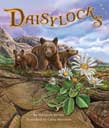
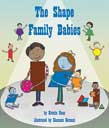

Learn more about the Journal of Neuroscience article on Science News.
Blog: drawings & sketches - dibujandoarte (Login to Add to MyJacketFlap)
JacketFlap tags: study, digital, from photo, colour studies, ballpen, Add a tag

digital versions of analogic drawing, a photo by dibujandoarte on Flickr.
Blog: drawings & sketches - dibujandoarte (Login to Add to MyJacketFlap)
JacketFlap tags: témperas, study, acrylic, dibujandoarte, still life, Add a tag
Blog: OUPblog (Login to Add to MyJacketFlap)
JacketFlap tags: Books, learning, Education, college, study, student, back to school, university, *Featured, Science & Medicine, Psychology & Neuroscience, back to uni, back to university, Jake McBride, Add a tag
How do you survive as a psychology student? It might be a daunting prospect, but we here at OUP are here to give you a helping hand through three years of cognitive overload. Here are our top tips:
1. Do some essential reading before you start your degree! Psychology is a very broad subject, so build some strong foundations with a wide reading base, especially if you’re new to the subject. Check out our Essential Book List to get you started (and recommendations welcome in the comments below).
2. Stay up-to-date with current affairs. Psychology is a continually evolving subject, with new ideas and perspectives emerging all the time. Read blogs, journals, and magazines; watch TED talks; listen to podcasts; and scan newspapers for psychology-themed stories.
3. Always keep your eyes and ears open. University is your chance to learn beyond the classroom. Pay attention to life – just watching your favourite TV programme can give you an insight into how a theoretical concept might actually work. Use everyday events and interactions to deepen your understanding of psychological ideas.
4. Learn from everyone around you. Psychology asks questions about how we as humans think – so go and think together with some other humans! Compare and contrast different ideas and approaches, and make the most of group learning or other opportunities, like taking part in other people’s surveys or experiments. Joining your university psychology society is a great way to learn from your peers and to balance work with play.
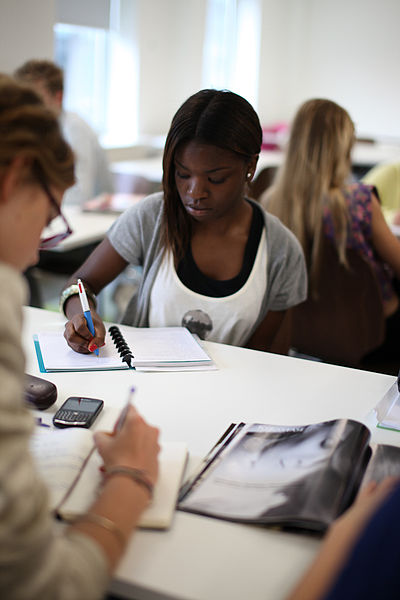
5. Learn how to study independently. This is your chance to learn what you want, not what you have to. You will have much greater academic freedom than ever before. Wherever you choose to study, you will have to take on your own independent research, and if you see yourself building a career in psychology, then independent investigation is crucial.
6. Hone your note-taking / diagram-making skills. On your laptop, tablet, smartphone — or with paper and pens — you’ll be writing a lot of notes over the course of your degree. Referencing and formatting might not seem like the most exciting aspects of your degree, but good preparation and organisation will make them more bearable (and quicker!). Get to know how best you learn, remember and process information.
7. Get enough sleep. Sitting up late staring at textbooks and computer screens is easy, but it’s not the healthiest habit to get into. Studying well is less about the number of hours you put in, than how effectively you spend those hours. Keep up a balanced diet, stay hydrated, do regular exercise, and find someone to talk to if you’re feeling stressed.
8. Don’t be afraid to admit to your own weaknesses. Psychology is a demanding subject, and questions are more common than neat answers.
9. Try to enjoy your studies. There are many ideas to explore, from behaviour to dreams, memory to psychoanalysis. Keep looking at different topics that interest you to stay motivated. When it does get too much, don’t be afraid to step back and take a break.
10. Finally, remember what psychology is about. You can get lost in surveys and experiments, theories and concepts, but try to always keep in mind what drew you to psychology in the first place. In studying psychology you’re taking part in a great tradition of questioning how the human mind works and behaves – be proud of that.
Heading Image: Student. Photo by CollegeDegrees360, CC BY-SA 2.0 via Flickr
The post 10 ways to survive being a psychology student appeared first on OUPblog.
Blog: Art & Drawings by Dain Fagerholm (Login to Add to MyJacketFlap)
JacketFlap tags: colors, study, light, spectrum, prism, gif, dain fagerholm, dain8), Add a tag
Blog: Art & Drawings by Dain Fagerholm (Login to Add to MyJacketFlap)
JacketFlap tags: study, light, crystal, prism, dain fagerholm, dain8), Add a tag
Blog: Art & Drawings by Dain Fagerholm (Login to Add to MyJacketFlap)
JacketFlap tags: design, drawing, study, ink, pen, 3d, tiling, creatures, game, system, maze, symmetry, grid, gem, dain8), hexagon, icosahedron, hexagonal, paralellogram, illusrtation, Add a tag
Blog: OUPblog (Login to Add to MyJacketFlap)
JacketFlap tags: Education, Math, study, undergraduate, Mathematics, university, lara, lectures, maths, *Featured, Science & Medicine, how to study as a mathematics major, how to study for a mathematics degree, lara alcock, mathematicians, mathematics degree, mathematics major, postgraduate, selden prize, lecturers, selden, alcock, Add a tag
By Lara Alcock
Two contrasting experiences stick in mind from my first year at university.
First, I spent a lot of time in lectures that I did not understand. I don’t mean lectures in which I got the general gist but didn’t quite follow the technical details. I mean lectures in which I understood not one thing from the beginning to the end. I still went to all the lectures and wrote everything down – I was a dutiful sort of student – but this was hardly the ideal learning experience.
Second, at the end of the year, I was awarded first class marks. The best thing about this was that later that evening, a friend came up to me in the bar and said, “Hey Lara, I hear you got a first!” and I was rapidly surrounded by other friends offering enthusiastic congratulations. This was a revelation. I had attended the kind of school at which students who did well were derided rather than congratulated. I was delighted to find myself in a place where success was celebrated.
Looking back, I think that the interesting thing about these two experiences is the relationship between the two. How could I have done so well when I understood so little of so many lectures?
I don’t think that there was a problem with me. I didn’t come out at the very top, but obviously I had the ability and dedication to get to grips with the mathematics. Nor do I think that there was a problem with the lecturers. Like the vast majority of the mathematicians I have met since, my lecturers cared about their courses and put considerable effort into giving a logically coherent presentation. Not all were natural entertainers, but there was nothing fundamentally wrong with their teaching.
I now think that the problems were more subtle, and related to two issues in particular.
First, there was a communication gap: the lecturers and I did not understand mathematics in the same way. Mathematicians understand mathematics as a network of axioms, definitions, examples, algorithms, theorems, proofs, and applications. They present and explain these, hoping that students will appreciate the logic of the ideas and will think about the ways in which they can be combined. I didn’t really know how to learn effectively from lectures on abstract material, and research indicates that I was pretty typical in this respect.
Students arrive at university with a set of expectations about what it means to ‘do mathematics’ – about what kind of information teachers will provide and about what students are supposed to do with it. Some of these expectations work well at school but not at university. Many students need to learn, for instance, to treat definitions as stipulative rather than descriptive, to generate and check their own examples, to interpret logical language in a strict, mathematical way rather than a more flexible, context-influenced way, and to infer logical relationships within and across mathematical proofs. These things are expected, but often they are not explicitly taught.
My second problem was that I didn’t have very good study skills. I wasn’t terrible – I wasn’t lazy, or arrogant, or easily distracted, or unwilling to put in the hours. But I wasn’t very effective in deciding how to spend my study time. In fact, I don’t remember making many conscious decisions about it at all. I would try a question, find it difficult, stare out of the window, become worried, attempt to study some section of my lecture notes instead, fail at that too, and end up discouraged. Again, many students are like this. I have met a few who probably should have postponed university until they were ready to exercise some self-discipline, but most do want to learn.
What they lack is a set of strategies for managing their learning – for deciding how to distribute their time when no-one is checking what they’ve done from one class to the next, and for maintaining momentum when things get difficult. Many could improve their effectiveness by doing simple things like systematically prioritizing study tasks, and developing a routine in which they study particular subjects in particular gaps between lectures. Again, the responsibility for learning these skills lies primarily with the student.
Personally, I never got to a point where I understood every lecture. But I learned how to make sense of abstract material, I developed strategies for studying effectively, and I maintained my first class marks. What I would now say to current students is this: take charge. Find out what lecturers and tutors are expecting, and take opportunities to learn about good study habits. Students who do that should find, like I did, that undergraduate mathematics is challenging, but a pleasure to learn.
Lara Alcock is a Senior Lecturer in the Mathematics Education Centre at Loughborough University. She has taught both mathematics and mathematics education to undergraduates and postgraduates in the UK and the US. She conducts research on the ways in which undergraduates and mathematicians learn and think about mathematics, and she was recently awarded the Selden Prize for Research in Undergraduate Mathematics Education. She is the author of How to Study for a Mathematics Degree (2012, UK) and How to Study as a Mathematics Major (2013, US).
Subscribe to the OUPblog via email or RSS.
Subscribe to only mathematics articles on the OUPblog via email or RSS.
Subscribe to only education articles on the OUPblog via email or RSS.
Image credit: Screenshot of Oxford English Dictionary definition of mathematics, n., via OED Online. All rights reserved.
The post Memories of undergraduate mathematics appeared first on OUPblog.
Blog: DIANE SMITH: Illo Talk (Login to Add to MyJacketFlap)
JacketFlap tags: study, mural, for sale, varnish, Town Center Gallery, Add a tag
Went forward with a 2nd coat of varnish on the backs again today. I'll be setting up the saw horses tomorrow. But first, I have to de-clutter the studio zone a little. Since it is in the garage, summer vacation sort of crept into my area - books, boxes, bikes, OH MY!
Anyway, while I had the varnish out, I also painted a coat on all of the studies I did during the mural process. Remember those? I shared them along the way. My plan is to frame them and probably put them up for sale in the Town Center Gallery. I don't see the need to keep them. Well, I might put a couple up for sale now and see how it goes.
Now that I'm anxious to paint other projects...I have no time. Oh well...
Blog: DIANE SMITH: Illo Talk (Login to Add to MyJacketFlap)
JacketFlap tags: strawberry, girl, princess, study, mural, Add a tag
Since I was wiped out from a painting marathon yesterday, I relaxed most of the day after church and watched bad movies (you'd think a 3-day weekend would offer up some better options).
Blog: DIANE SMITH: Illo Talk (Login to Add to MyJacketFlap)
JacketFlap tags: study, blue, Sky, tractor, Ultramarine, Cerulean, Add a tag
Let the fun begin!
| This is the "before" |
 |
| The "after" |
I kind of thought I'd get through more panels this evening, but I only made it through the first two. But, this is my favorite part - I've got the basic color layer down, and now I can build and fine tune (OK, one of my favorite parts).
I also completed the tractor study.
Blog: DIANE SMITH: Illo Talk (Login to Add to MyJacketFlap)
JacketFlap tags: Nova Color, Sta-Wet Palette, study, mural, whimsy, sketchbook, lightfast, yellow, chef, acrylic paint, Add a tag
The latest work in the garage involved a study of the chef. After drawing and painting the original proposal, tracing/adjusting the figure on the panel, and now drawing and painting the study, I went back and looked at the chef in my sketchbook. I did this when I was just playing around and brainstorming. Drawing is more my strength and the sketch is much looser and fun.
| Original sketchbook "brainstorm" for the chef |
| Photocopy of chef panel used in the projector and recent color study |
In the past, I've had frustration with acrylic paint in general - mainly, the short drying time making which meant I had to remix colors frequently and the fact that it dries a slightly different color than it goes on. But, with the Nova Color paints, the Sta-Wet Palette, and all the time spent working on this project, I can safely say that acrylics and I have made peace. In fact, I plan to work with acrylic paint for more of my future illustration projects.
Blog: DIANE SMITH: Illo Talk (Login to Add to MyJacketFlap)
JacketFlap tags: study, mural, grapes, acrylic paint, detail, Dionysus, Add a tag
Blog: drawings & sketches - dibujandoarte (Login to Add to MyJacketFlap)
JacketFlap tags: collage, study, mixed media, dibujandoarte, oil pastel, after painting, Add a tag
the third and last collage for the project for school.
these works (plus Seurat's Bagnade I posted some months ago) are just pieces of papers torn from magazine, glued to the board. later i added some color or details with oil pastels, then acrylic varnish on top.
the one after casas has also some gouache (témpera) beneath the oil pastel on the upper part of the work
Blog: drawings & sketches - dibujandoarte (Login to Add to MyJacketFlap)
JacketFlap tags: collage, study, mixed media, dibujandoarte, oil pastel, after painting, Add a tag
finished version
Blog: DIANE SMITH: Illo Talk (Login to Add to MyJacketFlap)
JacketFlap tags: illustration, doodles, characters, study, pencil, expressions, positions, Add a tag
One of the things I've been trying to work on is a character study. I know for illustration I need to be able to recreate the same character in different positions with different expressions. So, I've been inching my way through such a project using this character that appeared among my doodles.
Although she seems rather simple, she's a good challenge for me (if you hadn't noticed, I tend to get caught up in details). Instead, I'm trying to capture a lot with a little less than usual. I'll share as soon as I can.
Blog: drawings & sketches - dibujandoarte (Login to Add to MyJacketFlap)
JacketFlap tags: study, pencil, graphite, dibujandoarte, Add a tag
these two are lights and shadows studies. one of them if using a model, the geometrical bodies one is made up.
.
Blog: NOTE TO MYSELF (Login to Add to MyJacketFlap)
JacketFlap tags: statistics, humor, laughter, study, comedy, funny, humor poll, Add a tag
NOTE TO SELF: LET A SMILE BE YOUR UMBRELLA
Never really gave it much thought but according to a British poll, Brits turn into grumps once they reach their 50th birthday. Actually, thinking further, many people are miseries earlier in life but that as they say, is another subject. The poll conducted by researchers by "experts" from Glamorgan University surveyed the laughability of 2000 Britons.
The study claims that Brits laugh a lot less once they reach 52. Why 52 one asks or why not say...51...or 53. Furthermore, the researchers feel that the art of telling jokes is dying and good jokes are limited to one or two passable gags. Fourteen percent of people have never told a joke. Perhaps that's because some jokes go over like a lead balloon, as mine frequently do. There is nothing worse - IMHO - than telling a joke and nobody laughs, or you have to explain the joke. I mean, why be embarrassed!
Statistically, people laugh 300 times per day but only six times per day by the time they reach their teens. In other words, we take joy and find the world a happy place in which to live as children but learn otherwise once we reach adult-hood.
People in their 20's laugh a mere 4x per day but re-aquire a sense of humor when they have children. Once in their 30's, the average goes up to 5 laughs per day with almost 47% of those who have children. However, once we reach our 50's, our laughs are limited to 3x per day. Men become more miserable than females with twice as many males as females in their 50's. Seems that being around children makes adults happy.
So all of these stats leads one to wonder how they formed these conclusions. Did they interview people in the various age brackets and ask them to tell jokes and then rate the jokes, or ask them to keep a diary of the number of times per day they laughed, showed them comedies and gauged their reactions? There's no information on the criteria. Also, humor is subjective. What some people find funny, others find inane and stupid. Basically and IMHO, this poll really can't be taken seriously and perhaps it's fitting given the subject matter being humor.
Blog: Writers First Aid (Login to Add to MyJacketFlap)
JacketFlap tags: writing life, writing, study, writing coach, strategy, writing books, studying, writing course, writing habits, writing output, habits, writing information, writing more, Add a tag
 I can’t believe I never thought of this before! I feel ditzy even admitting this, but maybe it will help you like it’s helped me.
I can’t believe I never thought of this before! I feel ditzy even admitting this, but maybe it will help you like it’s helped me.
Aha! Moment
I have dozens of great writing books, and many of them contain terrific writing exercises to help us improve our craft. Some will improve the quality of your description, some will develop character emotions, some will pep up your dialogue, etc.
When I buy a book like this, I start out with great enthusiasm, using a clean notebook to do the writing prompts and exercises. Less than a week later, I’ve put the book on the shelf. Why?
Doing the writing exercises takes time. And I have so little writing time that I don’t feel I can spend it doing writing exercises.
What’s the Answer?
I never thought–until today–to combine the two things! I can’t believe this never occurred to me. I’m reading The Writer’s Portable Mentor: A Guide to Art, Craft, and the Writing Life. At first, I groaned when I read this: “Basic productivity underlies everything else. Take the chapters one by one. Actually do the exercises!“
I sighed and almost quit reading. But the author, Priscilla Long, added this instruction that created the AHA! for me: “But–and this is crucial–do every exercise in relation to some peice you are working on. Don’t just make up sentences on the fly, out of your head. Instead, in your writer’s notebook, write out a paragraph from the piece you are working on as it currently exists. This is your ‘before’ paragraph. Then work the paragraph, using whatever craft technique you are currently deepening… When you get an ‘after’ paragraph you like, type it back into the piece.”
notebook, write out a paragraph from the piece you are working on as it currently exists. This is your ‘before’ paragraph. Then work the paragraph, using whatever craft technique you are currently deepening… When you get an ‘after’ paragraph you like, type it back into the piece.”
Paradigm Shift
Actually doing the exercises in the craft books (or your lesson manual) is what improves your writing craft. So put your study/craft book right beside the manuscript you’re working on and use portions of your current work to do the exercises. You’ll be growing as a writer AND revising your manuscript at the same time.
I’m going to go back and systematically use the writing exercises in all the books on my shelf–while applying the exercises to my current revison. This technique will revolutionize my studying from now on!
I realize that many of you have probably been doing this for years! But it’s news to me–and I’m excited to see how this is going to change the way I write. If you try this, let me know how it works for you.
Add a CommentBlog: disobedient writer (Login to Add to MyJacketFlap)
JacketFlap tags: novel, writing, characterization, study, Craft, university, Iliad, Homer, Master's, Add a tag
From time to time I audit Master’s courses at the local university. While formal education normally derails my intellectual pursuits, I am a total nerd. I can’t resist it. I love homework. Not to mention classroom discussions.
In a recent lit class I had the kind of professor who had nothing to say, but used every four-syllable word in the SAT study guide to do it. I forgave him his skullet. The tie-dyed shirts. The way he held his chalk like a reefer. But I simply could not get over the way he squinted his eyes, held the chalk-joint like he was about to hit it and said, “The vivacious exposition effectually saltates off the page!”
Because I am addicted to 4.0’s, I dutifully attended his office hours for requisite brown-nosing, and it was here that he finally became worth my $500 (get your minds out the gutter, fellow bloggers!). I had no cohesive theme in my endeavor to compare Homer’s Iliad to some essays from the Vietnam War. Professor Skullet leafed through my books and said, “I see you’ve partaken in underscoring innumerable passages.”
“You mean I highlight a lot?”
“Indeed.”
And then, for the first time since the semester began, he said something: “Peruse the highlighted text. It’s the map of your mind.”
What advice. Pages and pages of seemingly unrelated prose all pointed to the same theme: my position on war. A position I could never really articulate before. My highlighting taught me what I was learning.
And furthermore (this is where I bring it all back to writing, folks) I found that I had been drawn to snazzy sentence structure, unlikely pairings of words and various characterization tricks. Highlighting helped me define what writing techniques I was ripe to experiment with.
I highlight/underline all my reading now for this purpose. It teaches me more than any homework or classroom discussion could, irresistible as they are. How do you decide what your writing needs?

Blog: Christine Garner Illustration (Login to Add to MyJacketFlap)
JacketFlap tags: sketches, study, sketch book, anatomy, concepts, Add a tag
I decided to take some time to scan a few things from my sketchbooks so far this year.
Some are studies of anatomy I made from “Anatomy and Drawing” by Victor Perard, some are studies from a book about animation and other’s are studies of animals and also various things from my head.
I’m just going to lump them all here as a gallery.












Blog: Ginger Pixels (Login to Add to MyJacketFlap)
JacketFlap tags: study, Ginger Nielson, boy in tree, Add a tag

©Ginger Nielson 2009
To be able to change elements in a painting using digital techniques is both a blessing and a curse. This is an example of a piece I am working on for my portfolio. At some point I have to make the ultimate decision to continue with the painting of one of these four versions. If you click on the image you can see all four images.
Blog: DIANE SMITH: Illo Talk (Login to Add to MyJacketFlap)
JacketFlap tags: illustration friday, color, painting, study, acrylics, Add a tag

"How will this story unfold?"
Well, because of a convenient nap, I was able to get a color study done of my intended composition. This isn't the finished product, but it's all I could do before the deadline. I'll post the final some day - I'll let you know how it "unfolds."
View Next 14 Posts














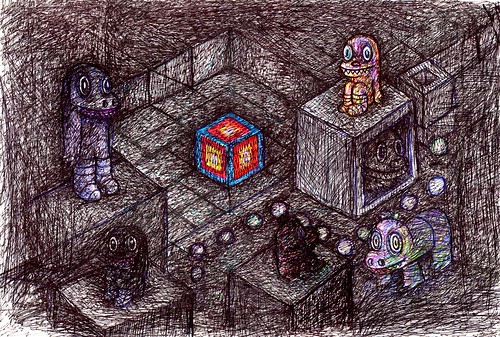
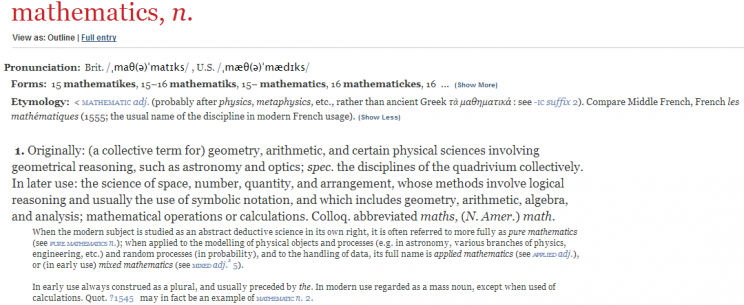




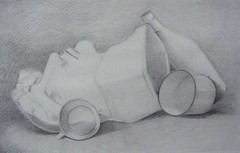


Very neat value studies, Martin. I want to try the shape one with my drawing students next semester. I especially like the composition in that one with the long dark shadows. The top one is creative with everything toppled over. The cat must have run past?
hahahaah the top one was arranged by the teacher on a table in the middle of the classroom, where we could all watch and draw, my point of view wasn't the best I guess, hahaa. The one below was made up by me, I should have made the bodies in board but didn't have time to make them so I just invented it, how strange, eh? Thanks again for the feedback. I wish I had more time to visit and comment in your blog, though I always get the emails with your new entries and look at them. hugs.